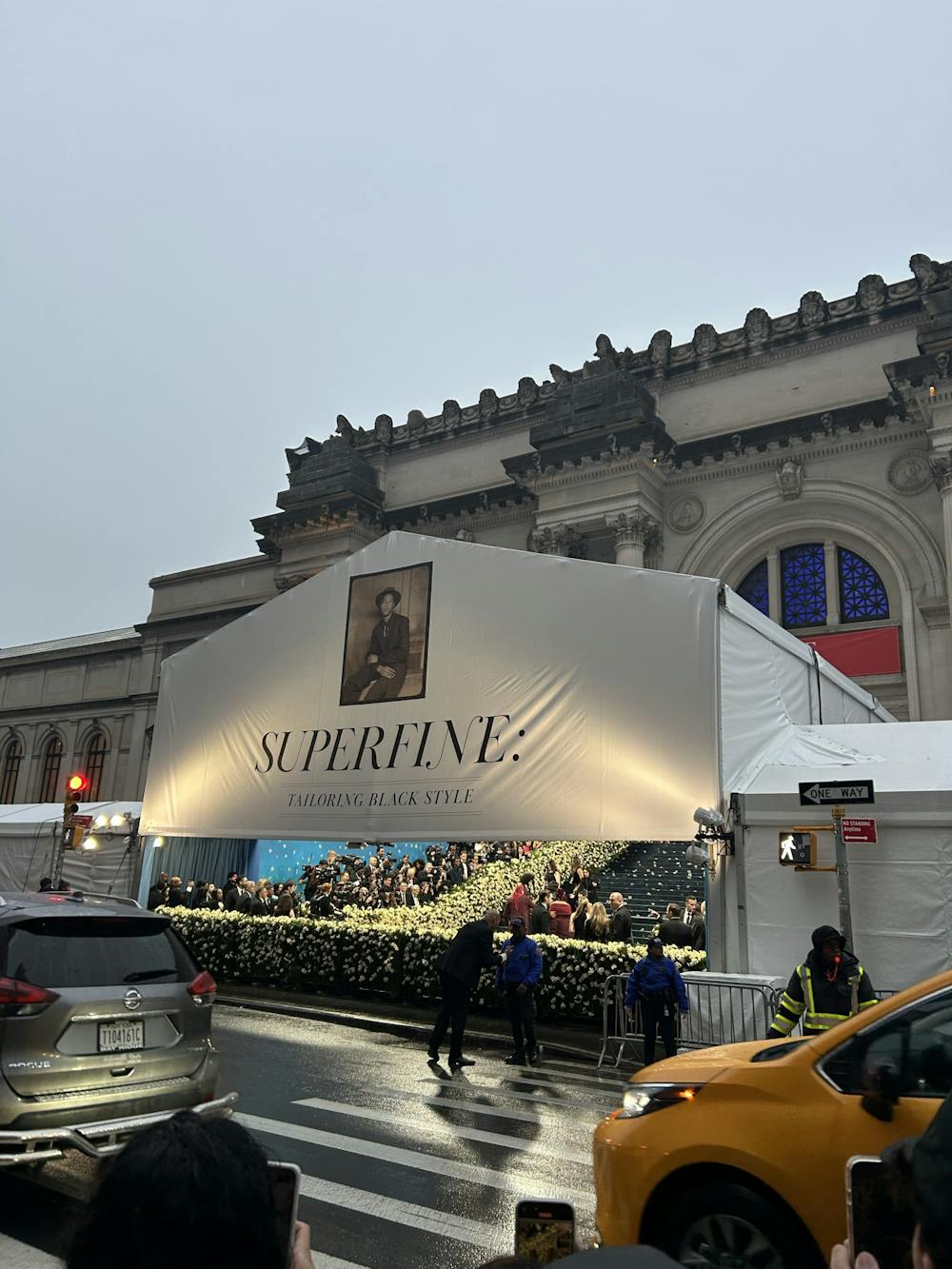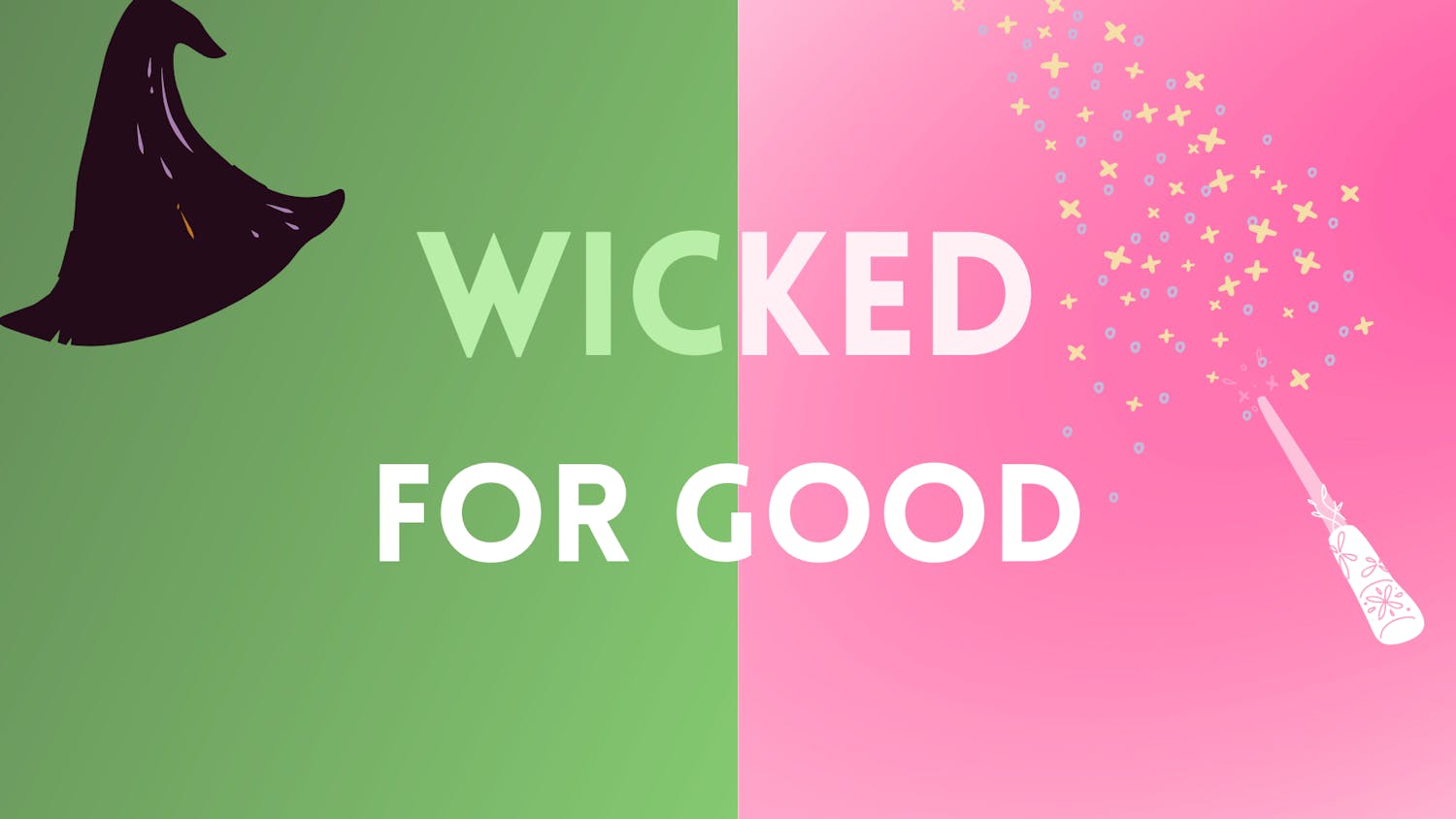On May 5, the world watched as the largest red carpet celebrated with a Black theme for the first time.
Black dandyism, a fashion movement that derived from African and Caribbean slaves evolving from a surviving class to a thriving class in America, is a visual, cultural and political embodiment of dressing to impress.
As the Metropolitan Museum of Art hosted the Met Gala, the premiere charity ball for art since 1945, this is the first time the red carpet highlighted a black-inspired theme, and the guests at this year’s Met were sure to honor history with respect, grace, swag and opulence.
Starting as a point of assimilation and evolving to identity expression, Black dandyism’s focal point is to showcase personality through the confines of tailored formal pieces. From polka-dotted neckties, tweed jackets, feathered top hats, mahogany canes and satin gloves, the dandy takes influence from European styles with the African American experience interwoven in the lining of every piece from color, pattern and style. Dandyism is not simply a historical trend, it is an amalgamation of individualism and community that has remained a timeless uniform in the Black community.
As the Met Gala has continuously gained popularity over the years whether from the artistic themes, star-studded guest list or polarizing opinions on ensembles, the first Monday of May is the “Olympics of the fashion world.”
Despite less digital conversation leading up to this year’s Met, largely in part due to many fans being unfamiliar with the concept of Black dandyism, the gold medal-level attendees were quick to accurately show the story rather than tell it.
Before giving a rundown on the runway looks the reader needs to understand the distinction between the exhibition theme and the red carpet dress code. “Super Fine: Tailoring Black Style,” is the theme for the exhibition being featured in the museum, and “Tailored for You” is the dress code for the guests.
With an emphasis on tailoring, looks that complimented and enhanced the silhouette of the model are what the opinionated eye should focus on. While the looks that took the extra step in honoring the theme of the exhibition, its history, and incorporating the artistic liberties of the designer or personal flair of the guest are the ones that separate a “meh” look from a “Met” look.
This year’s Met carpet was a pleasant surprise, due to more guests than usual attempting to stay on theme, but with cohesive attempts also came more attendees playing safe rather than playing hard, which is quite the opposite of Dandyism.
Thom Browne, Prada, Ozwald Boateng, and Louis Vuitton (LV) were the designers that embodied the dandy most cohesively or artistically in both theme and dress code.
Browne, the pioneer in redefining tailoring in the 21st century, styled some of the strongest looks of the night. From Demi Moore being a pinstripe tie and Lorde being a cummerbund, the designer took elements from a traditional men’s suit and made them larger than life.
Highlighting some of the world's most talented athletes, Angel Reese and Noah Lyel had structured black and white uniformity to their looks with Lyle sporting the traditional Thom Browne short and long sock combination ordained with pearls and accompanied with an umbrella. Reese modeled “a tuxedo disguised as a dress” tailored to her frame with close attention to the stitching of her ensemble that featured a drop-waist skirt.
Browne seemed to have a running theme of trompe-l’oeil, a technique in art that means “trick of the eye” as seen in supermodel Anok Yaoi’s tuxedo ball gown and Whoopie Goldberg’s white sequin overcoat. He also includes floral motifs showcased in Tramell Tilman’s black calla lilies attached to the lapel of his cropped velvet suit jacket and again in Nicki Minaj’s shoulder-blooming fabric florals that float above her pinstriped, mermaid pencil skirt.
With a constant black and white in Thom Browne’s lineup, it was Janelle Monae’s two-part look that stole the show, featuring an oversized tuxedo-designed cape atop a deconstructed super coat with a combination of reds, whites, black and navy blues, accessorized with a ticking monocle descending from a bowler hat.
It was clear from Browne’s mission to reimagine the traditional suit as a fashion house that they saw an opportunity in this year’s theme and seized it with ingenuity and flair.
Brand cohesion can also be seen in LV. In a house whose creative director is a Black man, LV’s direction seemed to come in the form of subtlety and class in contrast to the more Avant Garde style of Thom Browne.
White, grey, burgundy, oh my, the LV team took a blue carpet instead of a yellow brick road to the Wiz, himself, Pharrell Williams. The producer and visionary styled a host of artists, both visual and sonic like Henry Taylor, Zendaya, Future, Sabrina Carpenter, Doechii, Malcolm Washington, Callum Turner, Jeremy Allen White, Pusha T, and LISA. From the beading on burgundy suits, hand-made embroidery on shirts, and exaggerated collars, LV’s men and women reminded the audience of the power of a three-piece suit.
Zendaya’s Diana Ross-inspired all-white, perfectly tailored suit was a tasteful choice along with the ‘Swamp Princesses’ (Doechii) bold and artistic LV branding on her cheek and ‘Pop’s Polly Pocket’s’ (Sabrina Carpenter) grandiose tailcoats.
With every performance that nails the look, there come looks that pale in comparison.
Although Chanel had some standout pieces like JENNIE, Lupita Nyongo, and Whitney Peaks’ ensemble, some of the other women representing the double-c, like Dua Lipa and Angele, seemed less theme-inspired despite looking red carpet ready.
Some looks in general just played it safe, leaving a less memorable impact on the carpet like Maya Hawke, Miley Cirus, Gayle King, and ROSÉ, whose looks may have been ‘tailored’ but missed the ‘for you’ aspect in showcasing more of their personality.
On the opposite end, some designers and artists find ways to incorporate their culture, like S.coups, of SEVENTEEN’s reimagined hanbok that paid homage to his Korean heritage whilst maintaining the theme. The same goes for multihyphenate, FKA Twigs’ nod to Josephine Baker in a visual history lesson with her Wales Bonner dress. Bad Bunny also had in on the action which included the pava, a Puerto Rican straw hat traditionally worn by farmers, in his chocolate dandy outfit.
There are even designs that prioritize artistic and unique approaches above all else. Jenna Ortega’s metallic measuring tape for Balmain, Janicza Bravo’s multi-textured and patterned suit and skirt for Tory Burch, and Andre 3000’s unique piano getup that still manages to be on-key for his style all take a more intriguing approach.
One brand that combined the classic safer elements, with artistic vision and cultural history was Marc Jacobs. Styling the Queen of the Met, Rhianna in a dramatic sun hat that shadows over a cropped suit jacket above and a structured bodice that traces her baby bump with vertical stripes paired with a suit jacket that is acting as a skirt.
Rihanna’s look also features a maroon and white polka-dotted handkerchief necktie that matches elements of Valentina Ferrer’s dress, which follows a similar silhouette to Doja Cat’s outfit, providing a colorful storytelling experience on the carpet.
When it comes to color on the carpet, one issue was the lack thereof. Whether the combination of vibrant hues or monochromatic looks, playing with color is a staple of dandyism and was also a staple for British-Ghanaian designer, Ozwald Boateng.
Boateng styled Jaden Smith, Tems, Ncuti Gatwa, and Burna Boy, in looks that included tweed capes, Kente patterns, eel skin designs, jacquard dresses, and ornate parasols that combined violets, teals, greens, crimsons and canary yellows into a kaleidoscope of tailoring that served as refreshing pop of color of the night.
Teyana Taylor and Jodie Turner-Smith were two other names circling the press as they painted the carpet red with their monochromatic looks. Taylor by Ruth E. Carter and Turner-Smith by Burberry both captured the dandy through different executions.
Taylor’s look highlighting her identity as the ‘Rose in Harlem’ spoke to her experience and origins as well as a nod to her music as she graced the carpet early and was not soon forgotten. With a charcoal pin-stripped suit paired with a padded crimson cape adorned in broaches and silver pieces, Taylor sauntered across the carpet with a feathered fedora atop a durag.
Turner-Smith stepped out of her person and into a structured design inspired by black equestrian, Selika Lazeski. The actress’s entire leather attire is complete with a dramatic top hat that just covers her left eye, with an overall Victorian feel to the costume.
Although highlighting Monae, Taylor, and Turner-Smith as stand-out pieces, it would not be in true Dandyism fashion to not give flowers to the men.
Actor, Colman Domingo and racecar driver, Lewis Hamilton were co-chairs for this year’s Gala for a reason. Having the carpet being welcomed with a black men’s choir, while Domingo sported a preacher-like cobalt blue robe before revealing a perfectly pattern-balanced outfit, Domingo set the tone early. The actor managed to make his grid mark jacket and polka-dotted necktie and flower harmonize look effortless for the dandy, as he revealed a pattern-balanced look underneath the robe.
Following suit, Hamilton sported an ivory uniform. Featuring a cropped jacket that stops just above his waist, his suit is centered with large, structured lapels that were decorated with a silver, red, and gold broach that matched the one on the beret atop his head. The tuxedo pants were met with black glossed dress shoes and featured an embroidered sash cascading from his left pocket.
With the criticism of men at the gala not putting in as much effort as the women, both the theme and the designers gave way to an opportunity that the gentlemen took advantage of in their embodiment of dandyism.
With ‘China: Through the Looking Glass’ in 2015 and now ‘Superfine ‘Tailoring Black Style’ in 2025, one can wonder if this opens more chances for cultural groups to take center stage on the carpet.
Fashion is a space for creativity and art but is also deeply embedded in our worldly history. As Dandyism was once used as both a weapon to fight for chances and a tool to defend one’s worth just to be in social spaces, it is through fashion that we can appreciate it no longer being the key to but rather a door that opens to a world of freedom, opportunity, and in the case of the Met, artistic celebration!
Anthony Azuike is a writer for The Setonian’s Opinion section. He can be reached at anthony.azuike@student.shu.edu.





